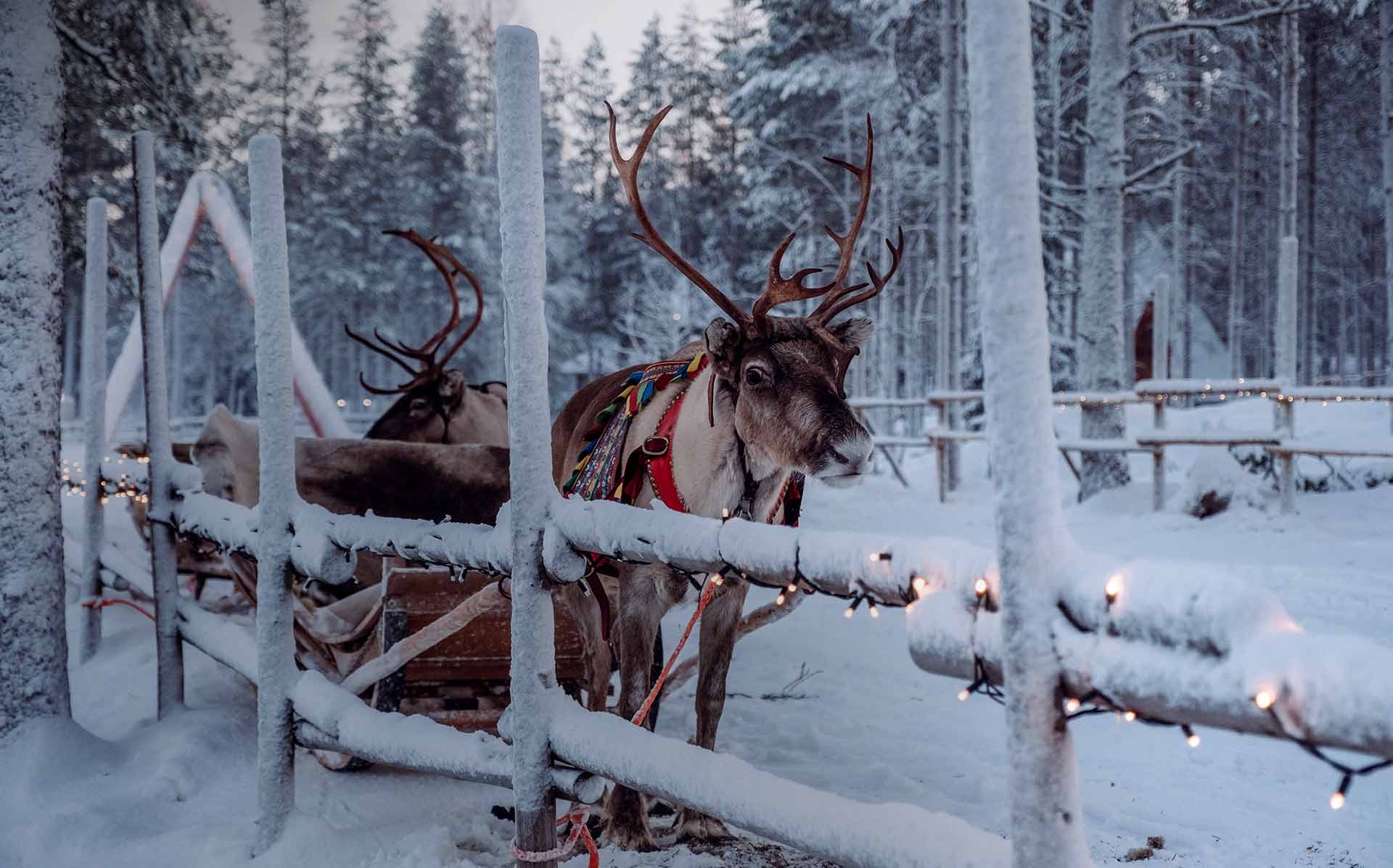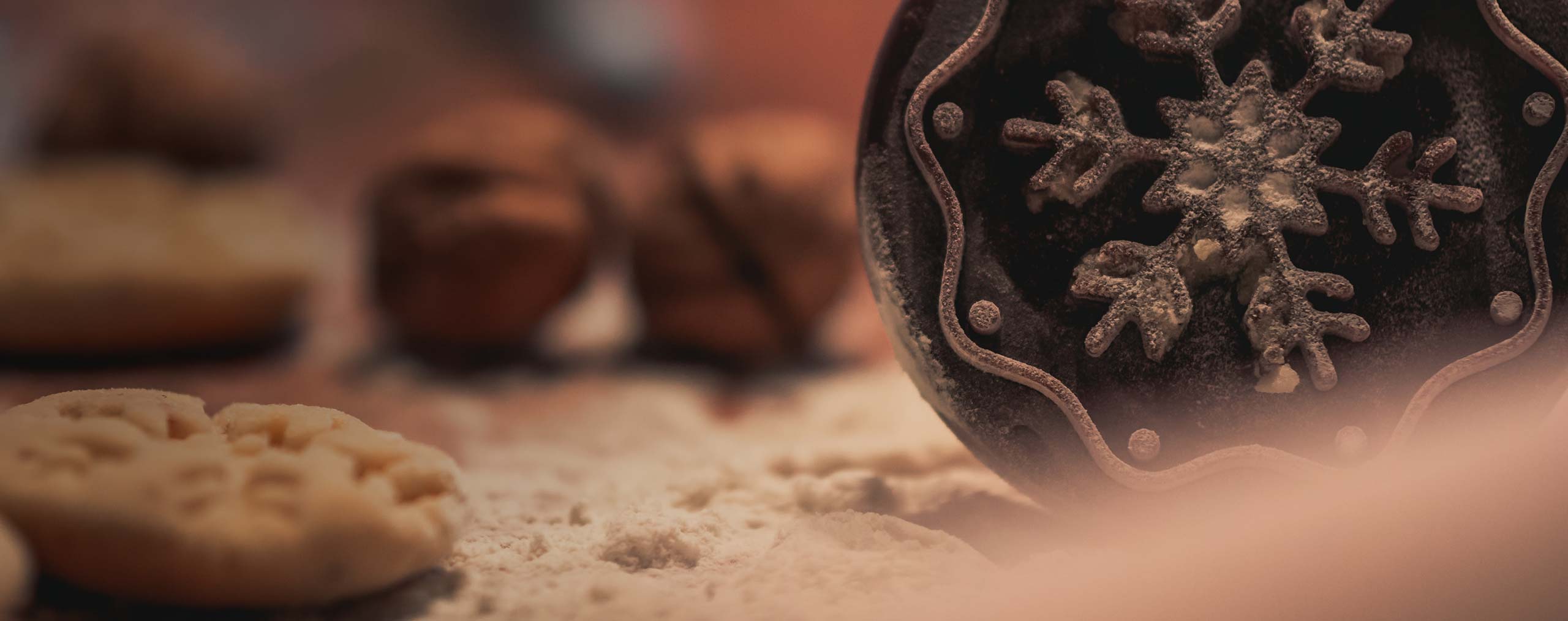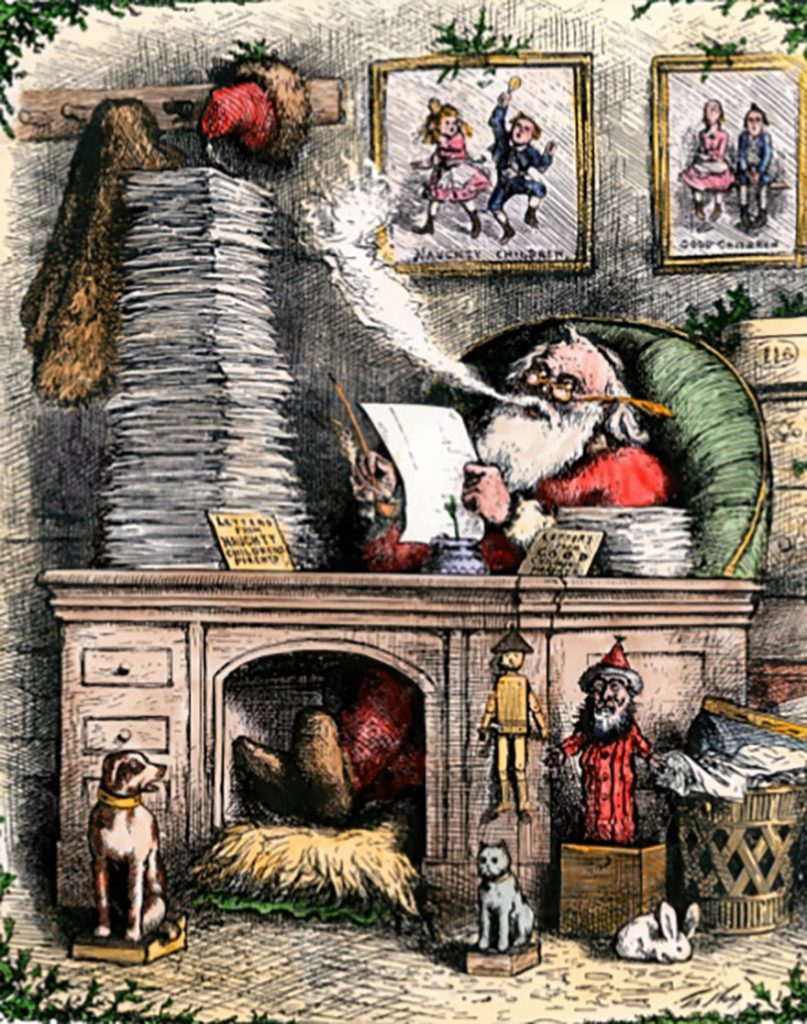
The Heartbeat of Christmas
The lines may be among the most famous ever written:
Now, Dasher! now, Dancer! now, Prancer and Vixen! On, Comet! on, Cupid! on, Donder and Blitzen!
With this hearty call, Santa urged on his reindeer team and changed the idea of Christmas forever. Moore could have never imagined that his words would have such a stunning effect on American culture, but over the next several generations, artists and illustrators inspired by his poem would create the Santa image the world would know and love!

Traditions
Some traditions are sacred, like leaving a plate of cookies out for Santa and carrots for Rudolph and his dashing friends. Christmas just wouldn’t be Christmas without these small wonders passed down from generation to generation.
Twas the Night Before Christmas shaped the way people see Christmas! Even Santa himself was a kind of a dour guy before Moore reimagined him, turning the rather thin figure into Jolly St. Nick!
Moore imagined what Christmas Eve and the spirit of the holiday could become: the magical sleigh, eight dashing reindeer, Santa bounding down the chimney, his soot-covered fur coat and pipe, and the plump elf filled with laughter and a bundle of toys he had flung on his back.
Santa’s Makeover
Twas the Night Before Christmas served as a new starting point for illustrators, painters, and printmakers who would refine and add to Santa’s legend. Each new generation of artists added to the Santa image, kindling the Christmas spirit in youngsters of every age and reawakening feelings of nostalgia among their loved ones.
Perhaps the most famous Santa illustrations were created by Thomas Nast, who spent three decades drawing and defining the jolly elf’s contemporary image in a series of posts published in Harper’s Weekly, a popular nationwide magazine in the nineteenth century. In Nast’s drawings, including the famous 1881 picture where he has grown jolly and round, Santa is rosy-cheeked, wearing a red suit with fur trim, having a flowing white beard, and has the ever-present twinkle in his eyes.


Reindeer Games
Moore gave readers—and listeners—an enchanted vision of Santa’s magical trip. But, no one could have predicted that the eight tiny reindeer would become so popular. The first illustration of the reindeer on the rooftop appeared in an 1830 book, almost instantly turning them into a revered part of the poem.
The reindeer-powered sleigh isn’t merely a trick to get Santa up on the rooftops. Each reindeer has a name, which Santa proudly whistled and shouted – dash away! dash away! dash away all! The unique monikers provided the reindeer with personality. Magical—and away they all flew like the down of a thistle!
The Most Famous Reindeer of All!
In 1939, at about the exact moment when it seemed that America really needed a boost due to the ongoing Depression and growing war in Europe, an unknown copywriter named Robert L. May came up with a new character for a Montgomery Ward coloring book. Naming him “Rudolph,” May envisioned him at the lead of Santa’s reindeer team.
In that first year, the giant retailer gave away 2.4 million copies of “Rudolph the Red-Nosed Reindeer,” the heartwarming story of a young reindeer whose nose lights up like a bright Christmas bulb. Although he is mocked by his young friends, Rudolph eventually saves Christmas when Santa enlists him to lead the team. Suddenly, Moore’s eight tiny coursers were nine!
Due to paper shortages during World War II, Montgomery Ward ceased production of the coloring book. However, when restrictions were lifted in 1946, the company gave away 3.6 million copies. Then, as if Rudolph weren’t already getting all the holiday love from fans around the world, the shiny-nosed hero was immortalized in song! The 1949 recording of “Rudolph the Red-Nosed Reindeer” by America’s favorite singing cowboy Gene Autry rocketed to #1 in the US. The single sold 2.5 million copies in its first year and eventually some 25 million.

Another milestone took place in 1963 when Rankin/Bass Productions made a stop-motion animated children’s special that expanded the original Rudolph story. The writers added popular new characters, like Hermey the Elf, Yukon Cornelius, and Bumble, the Abominable Snow Monster. Burl Ives narrated the show, appearing as a jolly snowman and sang another famous rendition of Rudolph’s song. Each year, fans clamored for the show along with the others as part of the Christmas rotation and the rest is history…